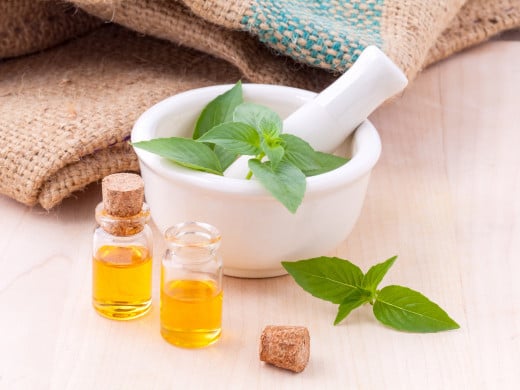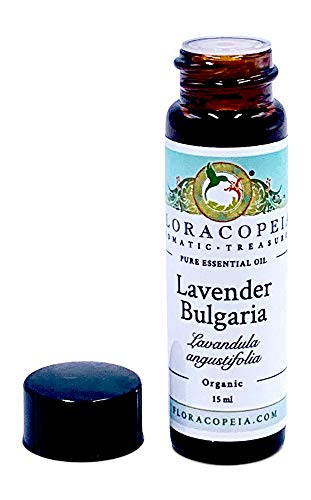An Essential Oil is not an Infused Oil is not an Extract or a Tincture ...
Herbs for Remedies and Recipes

Choosing the Right Tool for the Job
If you try to use a hammer to tighten a screw, you'll spend a lot of time and energy not achieving your goal, and the frustration from getting nowhere might even lead you to break whatever it is you're trying to fix (see also: "Hulk SMASH!").
Choosing the right tool for the job is part of being capable and functional in any skill or craft, and herbalism - the study or use of the medicinal properties of plants - is no different.
You Have Options
Herbs are defined as plants with healing properties. You can prepare herbs fresh or dried for use as infusions, decoctions, poultices, tinctures, and extracts of whole plant material as well as extracting isolated constituents like essential oils for use.
Each kind of preparation offers a product for use that is preferable over the others because of the herbal traits it features, as well as the ones it minimizes. The composition and potency of fresh herbs and all their prepared forms determine what herbal preparation to use based on who, when, where, why, and how a person desires to use it. Because of the unique set of benefits and risks exhibited by each, they are not typically interchangable.
Even if more than one kind of preparation COULD be used to suit your needs, the list of possibilities will present one with the most benefits, one with the maximum benefits, one with the most risks, and one with the maximum risks. Comparing all your options before choosing an herbal preparation to meet your needs can help maximize benefits while minimizing risks - a wise step in using herbs effectively for their medicinal properties as well as for their subtle pleasantries like aroma and flavor.
You may have heard of an herbal plant that offers something you desire, like lavender relaxes and peppermint helps digestion. But do you know which form to use it in to deliver those effects? Remember, you've got options!
To get you started, let's examine four commonly confused herbal preparations that yield a liquid product for use: essential oils, infused oils, extracts and tinctures.
Essential or Infused...Confused?
You're not alone. Don't feel foolish... feel the need to learn!
"Q: I read an article promoting the benefits of "oregano oil." The article praised oregano ESSENTIAL oil for its ability to fight off 6 different types of cancer that they named (all "proven" effective, but not one study cited), then had a recipe for how to make your own oregano ESSENTIAL oil at home, which basically read like this:
1. crush and bruise fresh oregano leaves,
2. place leaves in olive oil and seal in a jar,
3. turn jar about once a day for 2 weeks...
and - voila! Your own oregano ESSENTIAL oil to drizzle on your pizza!
A: WAIT A SECOND!! Is this why people are getting so confused?!
This is NOT an ESSENTIAL OIL you are creating here - it is an
INFUSED OIL! This infuses the essential oils from about a handful's worth of fresh plant material into a jar full of cooking oil for eating. Generally speaking, a totally fine way to consume the benefits of oregano oil, but this is not an essential oil." (Source: essentialinfo.weebly.com/faqs.html)
Essential Oils
Essential oils are volatile, aromatic oils found in a selection of plants that give a plant its characteristic scent. This oil is collected from plant material, usually herbs, and typically through the process of distillation. Essential oils are used industrially for their scent, flavor, and solvency properties, and consumers use them for cosmetic blends, cleaning blends and aromatherapy at home.
Because pure essential oil is an uncut, undiluted chemical extract harvested straight from the plant, it takes several pounds of plant material just to produce a tangible amount of essential oil. The result is hundreds if not thousands of times more concentrated than you'd find in the plant itself. That is why essential oils are packaged for individual sale down to the 5ml size, just about 1/8 fl. oz - just a couple drops will usually suffice for whatever you are trying to use it for.
For personal use, essential oils are most commonly used aromatically for benefits that can be achieved through inhalation, like clearing a stuffy nose with eucalyptus or peppermint. They are also effective for cleaning as they contain antimicrobial properties that were designed to help protect the plant sustain in nature. These uses are a direct reflection of the important role an essential oil plays in nature, which both wards off microorganism attacks and produces a scent for the plant via the oil's easily evaporated vapors. These abilities help protect the plant from untimely deterioration and rot while facilitating symbiotic relationships with other organisms, like insects, that helps both members to survive and both species to remain.
Some oils like peppermint can have adverse effects when used on or around the young or elderly, others like rosemary may trigger unwanted side effects with certain conditions like epilepsy. Essential oils are concentrated chemicals used as an ingredient in prepared products, not generally used as a product itself save for inhalation. No matter what they are being used for, or what industry is using them, proper dilution is required and they need to be handled with care.
Infused Oil/Infusions
An infused oil is a cooking oil, like olive, coconut, sunflower or grapeseed, to which an herb is added. The mixture then sits for a length of time, typically 1-2 weeks, in order to flavor the oil with the herb.
Common herbs to infuse into oils include oregano, thyme, and rosemary. Vinegar can also be infused the same way, resulting in an "herb-infused vinegar". Making infused oils requires proper sterilization and precautions to reduce risk of botulism, so do a little reading before trying this at home.
The infusion process for making herbal oils and vinegars is the same principle used to create other whole herb preparations like teas, extracts, and tinctures. By allowing an herb to steep in a liquid, the liquid is infused with a variety of constituents offered by the whole plant. This captures desirable characteristics of the herb like its flavor, aroma, and medicinal properties, along with other more benign components that can help the body more easily digest them.
The amount of plant material used in an infusion is much less than that needed to produce a usable amount of essential oil, just an ounce or so compared to pounds. Yet herbal infusions like medicinal teas and flavored oils still provide an adequate amount of constituents per serving to achieve their desired effects.
Prep your Own Herbs or Buy from Reputable Suppliers

Extracts
Extracts are used for flavoring and begin with a liquid like water, oil, or ethyl alcohol, or a combination thereof. An herb (or for vanilla, a bean) is then added and sits for a length of time in order to extract flavoring agents, like essential oils, resins, and tannins from the plant, imparting the plant's distinctive flavors into the liquid. Popular extracts like peppermint and lemon usually over 80% alcohol, with alcohol-free versions available.
Because only select plants are willing to give up their best flavor characteristics this way, sometimes essential oil or synthetic flavoring is added to ethyl alcohol instead to create an extract. Other times a combination of flavors, natural or synthetic, are used to create what is marketed as a single flavor extract. The combination, method, and components used to create extracts are determined by the producer.
Regardless of what it is made of, only a small amount of extract is then used as a flavoring agent in food and drinks, where it is dispersed throughout an entire recipe.
Tinctures
Like extracts, an herbal tincture is also made by steeping plant material in a liquid, though tinctures almost always use ethyl alcohol as the solvent. Tinctures are specifically created to harvest an herb's medicinal properties.
The percentage of alcohol a tincture contains depends on the herbal material being prepared, the lower end using an 80 proof vodka at 40% for leaves, flowers, and buds. Higher percentages are needed to extract medicinal properties from roots, berries, and resins.
Due to substance and potency extracts may not be medicinal, and tinctures don't have to taste good. To confuse the whole issue, the names "tincture" and "extract" can be used interchangeably to refer to tinctures. And while tinctures are produced for their health benefits, they may be used in cooking, teas, capsules, or straight from the bottle to achieve these effects.
Generally speaking though, extracts are best used for flavoring and tinctures are most used medicinally.
Learn the Whole Plant! Study Herbalism at its Roots
So Hammers for Nails and Screwdrivers for Screws
This of course is just a very basic and overly simplified introduction to the differences that exist between a few kinds of herbal preparations in order to understand the unique place each holds in regards to natural healing.
Each herbal product offers a set of possible effects it can be expected to deliver. Some effects are desired, some are unwanted, and both span a scale of intensity that can help you decide which herb in which form is the best choice for your particular situation.
It's like sizing up a project to determine which tool, in which size, is needed to get the job done.
You wouldn't reap much benefit smelling a tincture, you'd want the concentrated vapors of essential oils to maximize the healing effects an herb's aroma can offer. But since essential oils are just the aromatic oil part of a plant, you wouldn't eat those - you need whole plant infusions like tinctures and teas which provide both the active ingredients along with companion elements that help the body process them, boosting their effectiveness and making them safer to consume. Infused oils and crushed herbs flavor dinner dishes the best, and extracts work best to impart a plant's prized flavor notes to baked goods. If the delicious aroma of vanilla extract has ever fooled you into slurping it straight from the teaspoon, then you've already had a taste of why herbs need to be properly prepared for whatever you are trying to use them for.
So whether you're preparing herbs for pleasure or health, the right herb for your situation in the right form for your needs is the right choice to make. Proper diffusion maximizes benefit, proper dilution minimize risk, and proper preparation will support the whole being, for well being - just like a good friend. That's flower power.
If herbs harbor mechanisms for the well-being of people, and people are they way by which these tools connect with their purpose, then perhaps more importantly than understanding the special job each kind of herbal preparation does best is first being introduced to the idea that they even do.
About the Author
Lee Tea is a folk herbalist and investigative journalist with a public service focus on essential oil consumer advocacy.









